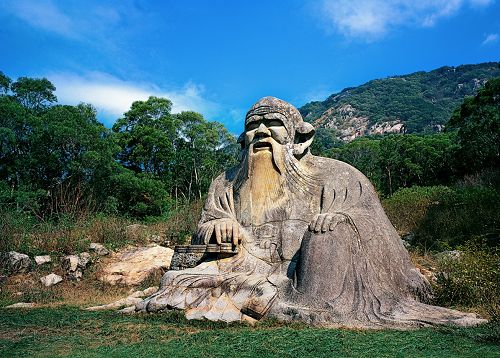Quanzhou’s oceanic culture lingers today

Taoist Rock Image of Laojun in Quanzhou
Quanzhou, crowned as an east Asian cultural city, has been shaped by the sea.
The history of exchanges between Quanzhou and foreign countries dates back to as far as the Eastern Han Dynasty (25-220). Quanzhou, established as a port city in the Tang Dynasty (618-907), became one of the China’s four major ports of foreign trade in the late Tang Dynasty, and was the largest seaport in the East during the Song (960-1279) and Yuan (1279-1368) dynasties, hosting a large community of foreign-born inhabitants from around the world. A large proportion of these inhabitants were Arabs and Persians, who built villages in Quanzhou. Even now there are residents with surnames such as Jin, Ding, Xia, Ma and Guo, whose ancestors had blood ties with Arabs. Muhammad, the founder of Islam, sent two of his disciples to preach in Quanzhou, and the two saints were buried on Lingshan Hill of Quanzhou after their deaths, in a place now called the Muslim Holy Tombs. The famous Chinese explorer Zheng He also visited the tombs during his fifth voyage.
Quanzhou culture mingled with the Central Plains culture, the dominant culture of Huaxia and Han Chinese; Minyue culture, derived in ancient times from the southeast coast of China, and ocean culture. The ocean culture in Quanzhou is exotic, demonstrated in many aspects, such as language and literature.
The Southern Min, spoken by the residents of Quanzhou, is sometimes mixed with several foreign words and phrases, which come from English, Arabic, Malay, Indonesian, Tagalog, and Sanskrit from ancient India. For example, they call sewing machines Majin and winter coats Kewo, akin to the pronunciation of machine and coat from English.
As for literature, the scholars in Quanzhou wrote several books to boost cultural and economic exchanges and promote the friendship between China and foreign countries, such as Record of all Barbarian Countries completed in 1225 by Zhao Rushi.
